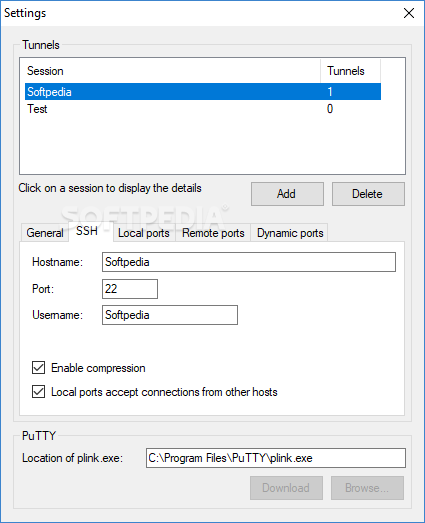
Access a service that is listening on a non-routable network.

Access a computer or service behind a firewall.Embedded rpc server to retrieve runtime information about one or more instances running on the system.Auto reconnection to the ssh server if the it is dropped by any reason.Idle clients do not get disconnected from the ssh server since Mole keeps sending synthetic packets acting as a keep alive mechanism.Resiliency! Then tunnel will never go down if you don’t want to:.user name, identity key and port), specified in $HOME/.ssh/config whenever possible, so there is no need to have the same SSH server configuration in multiple places. Leverage the SSH Config File: use some options (e.g.Aliases: save your tunnel settings under an alias, so it can be reused later.Create multiple tunnels using a single ssh connection: multiple tunnels can be established using a single connection to a ssh server by specifying different -destination flags.Auto address selection: find a port available and start listening to it, so the -source flag doesn’t need to be given every time you run the app.Keys are only 256 bits long while still providing high level security.$ mole start local -remote :3306 -server my-database-server Apple itself uses this authentication method in some instances, including during communication between certain devices. Ed25519: An emerging algorithm, Ed25519 improves on the security and performance of previous key types.Supported key sizes are 256, 384, and 521 bits. ECDSA: A newer algorithm, ECDSA provides a similar level of security to RSA but with shorter keys, translating to quicker performance.Length is strength, and you’ll want to create a key of 2048 or 4096 bits, with the former being sufficient and the latter being ideal. RSA: A widely supported algorithm, RSA is a strong choice for many situations.We’ll list the most common SSH key types here and explain the characteristics of each one: Firstly, you should confirm which variation your hosting platform, service, or other party recommends before creating your access credentials. The ssh-keygen command allows you to generate several key types and sizes that use varying algorithms. A strong encryption algorithm with a good sized key will be most effective at keeping your data safe. If you exclude -b, ssh-keygen will use the default number of bits for the key type you’ve selected. The desired algorithm follows the -t command, and the required key length comes after the -b input. We’ll discuss variations later, but here’s an example of what a typical ssh-keygen command should look like:

Enter the ssh-keygen command with the desired parameters. Launch Terminal from Applications > Utilities or by doing a Spotlight Search. The steps for generating an SSH key in macOS are as follows: Related: What Is SSH and What Does It Stand For? For more information on these concepts, refer to later sections of this guide. During creation, you can specify the algorithm used, length in bits, and other features of your key. With the ssh-keygen command you can perform all the functions necessary to generate an SSH key that’s complete and ready to use.
Ssh tunnel manager mac public key how to#
How to Generate an SSH Key Using SSH-Keygen


 0 kommentar(er)
0 kommentar(er)
